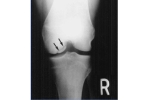Cartilage Surgery: Q&A

What is Articular Cartilage?
Articular cartilage is the smooth tissue the covers the ends of bones within the joint - it helps the joint move more smoothly. (Articular means joint) Healthy cartilage in our joints enables a gliding motion and reduces friction.
How is Articular Cartilage damaged?
Articular cartilage can be damaged during an injury or over time with general "wear and tear."
Can Articular Cartilage heal?
Unfortunately, cartilage cannot heal on its own. Instead, a procedure may be helpful to restore the articular cartilage. The purpose of these procedures is to reduce pain/symptoms and to stop the progression of arthritis.
How can I fix my Articular Cartilage?
The most common procedures for cartilage restoration are:
Microfracture/Drilling
Abrasion Arthroplasty
Autologous Chondrocyte Implantation (ACI)
Osteochondral Autograft Transplantation (your own tissue)
Osteochondral Allograft Transplantation (donor tissue)
What is Microfracture?
The goal of microfracture is to stimulate the growth of new articular fibrocartilage by creating a new blood supply. A sharp tool called an awl is used to make multiple holes in the defect. This action creates a healing response, a new blood supply and its new cells will form the new fibrocartilage.
What is ACI?
ACI is a two-step procedure where new cartilage cells is grown and then implanted in the cartilage defect. The first step is to remove healthy cartilage tissue from a non-weightbearing area of the bone. This tissue and it's healthy cartilage cells, or chondrocytes, are then sent to the laboratory to be cultured and grown.
Next, the newly grown cells are prepped to be implanted during a second surgery. A layer of bone-lining tissue, called periosteum, is sewn over the area. This cover is sealed with fibrin glue. The newly grown cells are then injected into the defect under the periosteal cover.
ACI is most useful for younger patients with defects > 2 cm in diameter.
What is Osteochondral Auto/Allograft Transplantation?
If a cartilage defect is too large for an autograft, an allograft may be considered. An allograft is a tissue graft taken from a cadaver donor. A donor block is cared for in a laboratory, where is is properaly sterilized and prepared. It is tested for any possible disease transmission. It can be shaped to fit the exact contour of the defect and then press fit into place.
Allografts are typically done through an open incision (not with an arthroscope).







